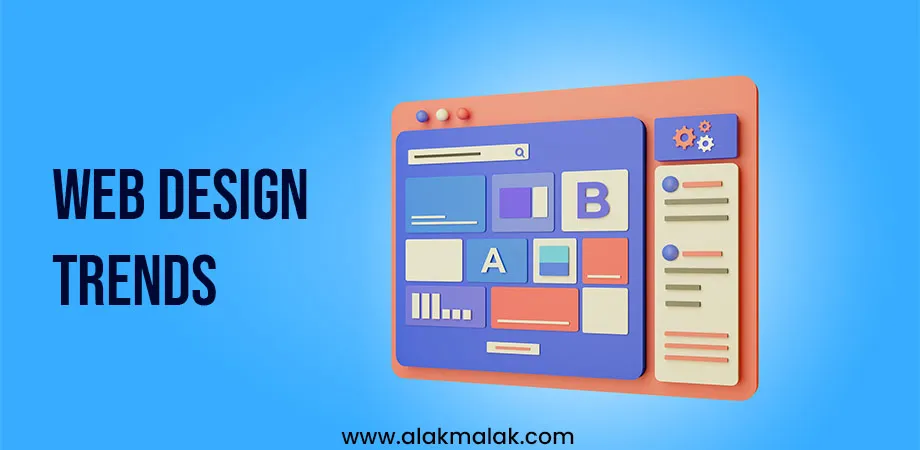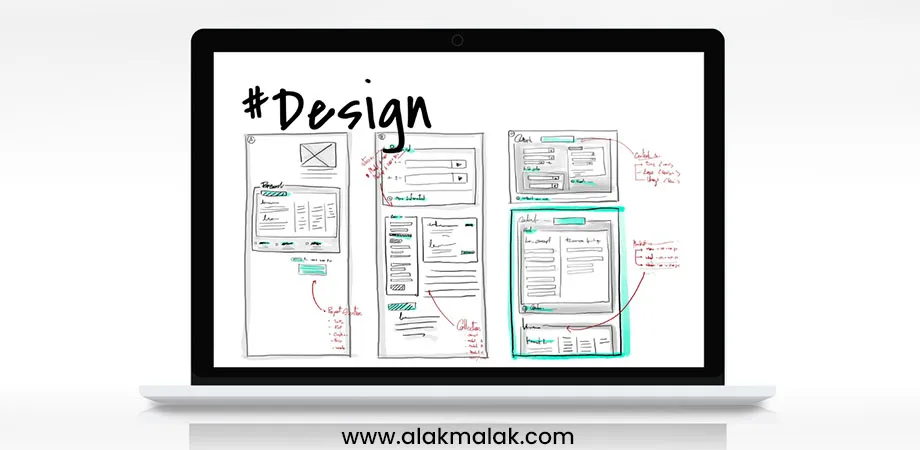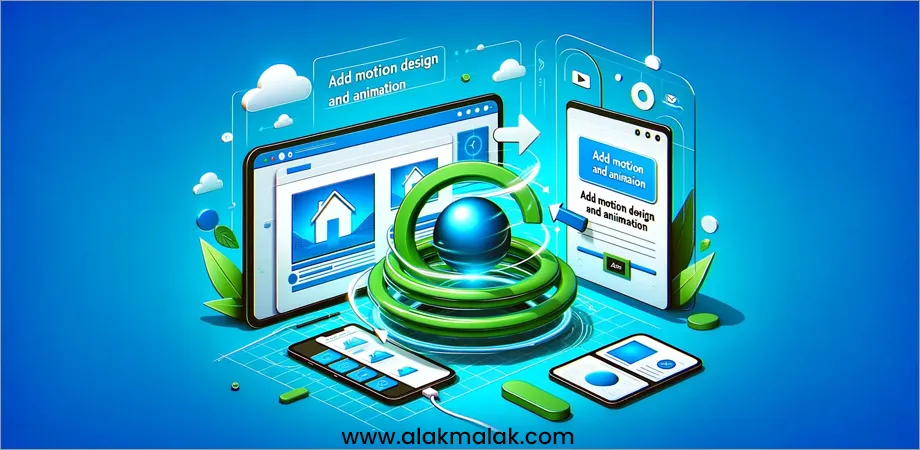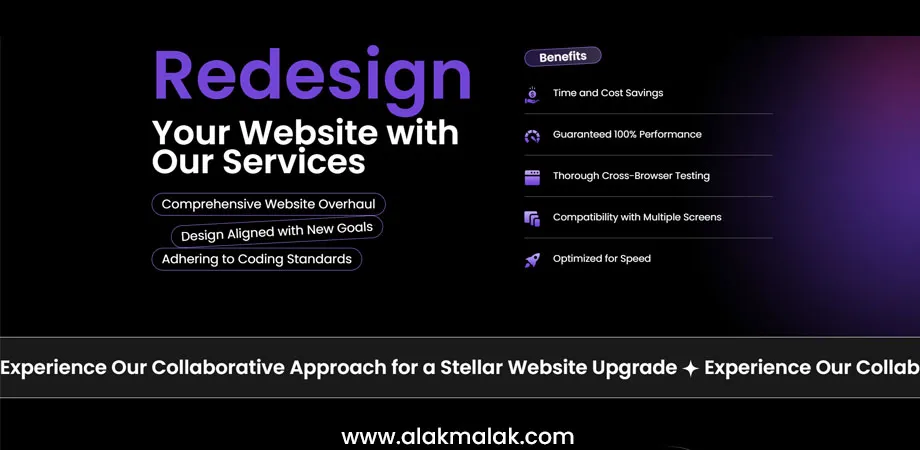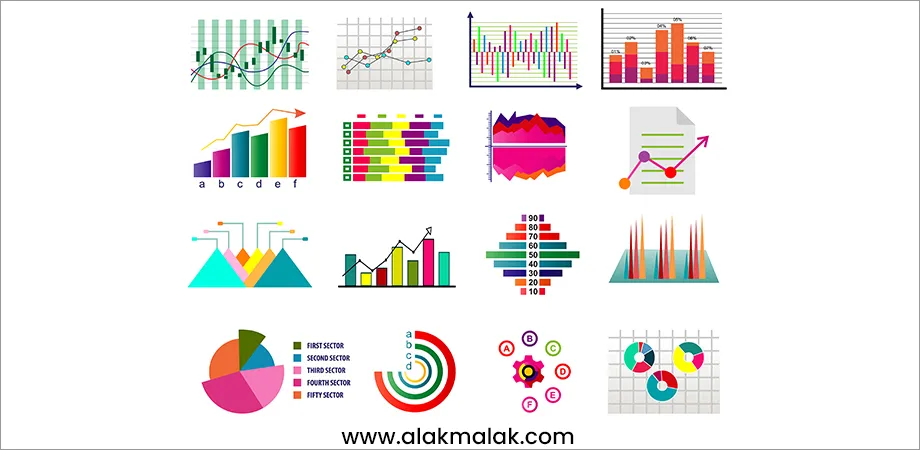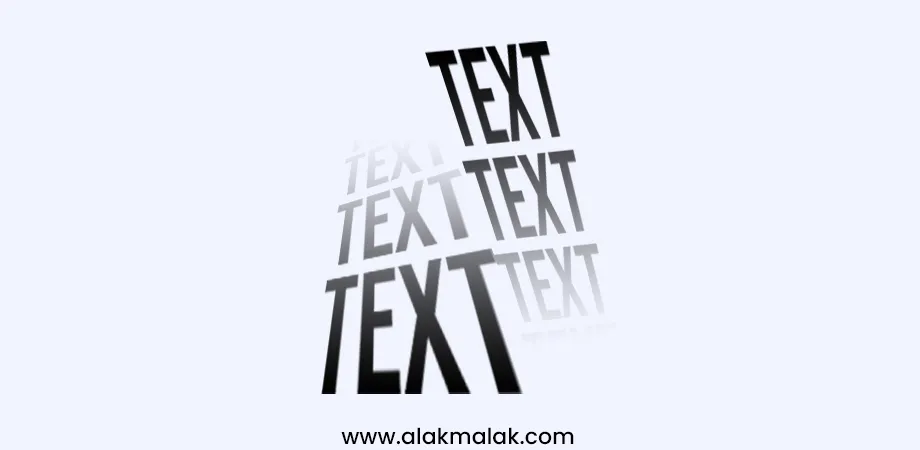Did you know that over 50% of website visitors leave a site within the first 10-15 seconds if it fails to capture their attention? In today’s fast-paced digital world, having an engaging and visually appealing website is crucial for businesses to thrive. As website design trends continue to evolve rapidly, it’s essential to stay ahead of the curve to keep your website fresh, modern, and user-friendly.
If you’re feeling overwhelmed by the constantly changing landscape of web design, don’t worry – we’ve got you covered. In this blog post, we’ll explore the top 10 website design trends that are set to dominate 2024, providing you with valuable insights to revamp your online presence and create a memorable experience for your visitors.
Drawing from over 18 years of experience as a leading website design company in India, our team of experts has carefully curated these trends, ensuring that you’re armed with the latest knowledge and strategies to captivate your target audience. From cutting-edge visual elements to innovative user experiences, we’ll guide you through the essential elements that will elevate your website to new heights.
Get ready to dive into the world of website design trends for 2024 and discover how you can transform your online presence into a true masterpiece.
Website Design Trends
Website Design Trends
1. UX-Focused Design
2. Hand-Drawn Illustrations
3. Visible or Clear Borders
4. Animations and Motion Effects
5. Dark Mode Design
6. Responsive Video
7. Interactive Cursors
8. Data Visualization
9. Kinetic Typography
10. Geometric Shapes
1. UX-Focused Design
In the ever-evolving world of web design, user experience (UX) has emerged as a paramount consideration. Gone are the days when websites were mere static showcases; today, they are dynamic and interactive platforms that demand a seamless and intuitive user journey. A reputable UI/UX Design Company understands that UX-focused design is no longer a luxury; it’s an essential component of any successful website in 2024.
Importance:
A compelling user experience can make or break a website’s success. According to a study by Forrester Research, every $1 invested in UX brings a potential return of $100. This staggering statistic underscores the significance of prioritizing UX in web design. A well-designed user experience not only enhances user satisfaction but also directly impacts key metrics such as conversion rates, bounce rates, and overall engagement.
Implementation:
Implementing a UX-focused design approach involves several key steps:
- Conduct thorough user research: Gather insights into your target audience’s preferences, behaviors, and pain points through surveys, interviews, and usability testing.
- Develop user personas: Create detailed profiles of your typical users, including their goals, frustrations, and motivations when using your website.
- Prioritize intuitive navigation: Ensure that your website’s navigation is logical, clear, and easily accessible from any page.
- Optimize for mobile: With the majority of internet traffic coming from mobile devices, responsive and mobile-friendly website design is non-negotiable.
- Embrace minimalism: Prioritize clean and uncluttered layouts, making it easy for users to focus on the most important information and actions.
2. Hand-Drawn Illustrations
In a digital landscape saturated with stock photography and generic graphics, hand-drawn illustrations offer a refreshing and unique approach to web design. These custom-crafted artworks have the power to infuse personality, creativity, and a human touch into a website, making it stand out from the competition. As we move into 2024, hand-drawn illustrations are poised to become a prominent trend, captivating audiences and leaving a lasting impression.
Importance:
The importance of hand-drawn illustrations in web design cannot be overstated. According to a study by Venngage, visuals are processed 60,000 times faster than text, making them an essential component of effective communication. Furthermore, custom illustrations can evoke emotions, tell stories, and create a stronger brand identity, ultimately leading to increased engagement and memorability.
Implementation:
Incorporating hand-drawn illustrations into your website design can be achieved through the following steps:
- Define your brand personality: Analyze your brand’s values, tone, and target audience to determine the style of illustrations that best resonates with them.
- Collaborate with talented illustrators: Partner with skilled artists who can bring your vision to life through their unique artistic flair.
- Integrate illustrations strategically: Use illustrations to complement and enhance key sections of your website, such as the homepage, product pages, or storytelling elements.
- Maintain consistency: Develop a cohesive visual language by using similar styles, color palettes, and themes throughout your website’s illustrations.
3. Visible or Clear Borders
In the realm of web design, the use of visible or clear borders has emerged as a trend that promises to enhance user experience and improve website aesthetics. As we progress into 2024, this design element is set to gain even more prominence, offering a simple yet effective way to organize content, create visual hierarchy, and guide the user’s eye through the website.
Importance:
The importance of visible or clear borders lies in their ability to provide structure and clarity to a website’s layout. According to a study by the Nielsen Norman Group, users spend an average of 10-20 seconds scanning a webpage before deciding whether to stay or leave. Clear borders can help users quickly identify and understand the different sections of a website, improving their overall experience and reducing bounce rates.
Implementation:
Implementing visible or clear borders into your website design can be achieved through the following steps:
- Analyze your content: Identify the different sections and elements of your website that require clear separation or emphasis.
- Choose appropriate border styles: Experiment with different border styles, such as solid lines, dashed lines, or subtle drop shadows, to create the desired visual impact.
- Utilize contrasting colors: Use contrasting colors for borders to make them stand out against the background, enhancing visibility and readability.
- Maintain consistency: Ensure that the use of borders is consistent throughout your website, creating a cohesive and harmonious design.
4. Animations and Motion Effects
In an increasingly dynamic digital landscape, static websites are rapidly becoming a thing of the past. As we move into 2024, website animations and motion effects are emerging as powerful tools to captivate audiences and elevate the user experience. These engaging visual elements breathe life into web designs, creating a sense of interactivity and immersion that can leave a lasting impression on visitors.
Importance:
The importance of incorporating animations and motion effects into web design cannot be overstated. According to a study by Oberlo, web pages with animations have a 70% higher conversion rate compared to those without. Furthermore, these dynamic elements can effectively guide users’ attention, convey brand personality, and enhance the overall aesthetic appeal of a website.
Implementation:
Implementing animations and motion effects into your website design can be achieved through the following steps:
- Identify key elements: Determine which elements of your website would benefit from animations or motion effects, such as calls-to-action, navigation menus, or product showcases.
- Choose appropriate transitions: Experiment with different animation styles, such as fades, slides, or parallax effects, to create a cohesive and visually appealing experience.
- Optimize for performance: Ensure that animations and motion effects are optimized for efficient loading and smooth playback across various devices and browsers.
- Maintain consistency: Establish a consistent visual language by using similar animation styles and timing throughout your website.
5. Dark Mode Design
As we navigate the digital landscape in 2024, dark mode design has emerged as a trend that not only captivates users with its sleek and modern aesthetic but also offers practical benefits. This design approach, which features a dark color scheme with contrasting light text and elements, is rapidly gaining popularity due to its ability to reduce eye strain, enhance readability, and create a visually striking online presence.
Importance:
The importance of incorporating dark mode design into web development cannot be overstated. According to a study by the University of Cambridge, using dark mode can reduce eye strain by up to 58%, leading to improved user comfort and prolonged engagement. Furthermore, dark mode designs have been shown to increase perceived professionalism and sophistication, making them particularly appealing for businesses operating in various industries.
Implementation:
Implementing a dark mode design into your website can be achieved through the following steps:
- Choose a suitable color palette: Select a harmonious combination of dark hues, such as rich blacks, deep blues, or muted grays, complemented by contrasting light colors for text and accents.
- Optimize readability: Ensure that text and essential elements are easily readable by maintaining appropriate contrast ratios and font sizes.
- Adjust imagery and graphics: Adapt your website’s imagery and graphics to complement the dark mode color scheme, ensuring they maintain their visual impact and clarity.
- Offer user preference: Consider providing users with the option to toggle between light and dark modes, catering to individual preferences and accessibility needs.
6. Responsive Video
In today’s multi-device world, where users access websites from various screen sizes and resolutions, having a responsive video experience has become an essential aspect of modern web design. As we move into 2024, a Responsive Website Design Company will play a crucial role in this trend, ensuring that video content is seamlessly optimized and displayed across different devices, from desktops to smartphones and tablets.
Importance:
The importance of responsive video cannot be overstated. According to a study by Cisco, video will account for a staggering 82% of all internet traffic by 2022. With such a significant portion of online content being video-based, providing a seamless and optimized viewing experience across devices is imperative. Failure to implement responsive video can lead to poor user experiences, increased bounce rates, and potential loss of engagement and conversions.
Implementation:
Implementing responsive video into your website design can be achieved through the following steps:
- Adopt a responsive web design approach: Ensure that your website is built on a responsive framework, allowing content to adapt and scale efficiently across different screen sizes and resolutions.
- Use HTML5 video players: Leverage modern HTML5 video players that support responsive design principles and provide consistent playback across various devices and browsers.
- Optimize video files: Encode your videos in multiple formats and resolutions to ensure efficient loading and playback, regardless of the user’s device or network conditions.
- Implement fluid layout techniques: Utilize CSS techniques such as fluid grids, flexible media queries, and responsive design patterns to ensure that video players and their surrounding elements adjust seamlessly to different viewport sizes.
7. Interactive Cursors
In the ever-evolving landscape of web design, interactive cursors are emerging as a captivating trend that promises to elevate the user experience to new heights. As we move into 2024, this innovative approach is set to redefine the way users interact with websites, adding an element of surprise, delight, and engagement. Interactive cursors are designed to respond dynamically to user actions, transforming the traditional cursor into a visually striking and interactive element that can guide, inform, and entertain.
Importance:
The importance of interactive cursors in web design lies in their ability to create a more immersive and engaging user experience. According to a study by Adobe, users are more likely to remember and positively engage with websites that offer unique and interactive elements. Interactive cursors can enhance brand recognition, convey information seamlessly, and provide visual cues that encourage exploration and interaction.
Implementation:
Implementing interactive cursors into your website design can be achieved through the following steps:
- Define cursor interactions: Identify key areas or elements on your website where interactive cursors can enhance the user experience, such as navigation menus, call-to-action buttons, or product showcases.
- Design custom cursor styles: Collaborate with designers to create visually appealing and on-brand cursor styles that compliment your website’s overall aesthetic.
- Utilize JavaScript or CSS animations: Leverage JavaScript or CSS animations to bring your custom cursors to life, ensuring smooth and responsive interactions across different devices and browsers.
- Optimize performance: Ensure that your interactive cursor implementation is optimized for efficient rendering and seamless performance, even on lower-end devices.
8. Data Visualization
In today’s data-driven world, the ability to effectively communicate complex information through visually appealing and intuitive representations has become increasingly crucial. As we move into 2024, data visualization is poised to become a prominent website design trend, offering businesses a powerful tool to convey insights, tell compelling stories, and engage audiences in a meaningful way.
Importance:
The importance of data visualization in web design cannot be overstated. According to a study by the University of Pennsylvania, humans process visuals 60,000 times faster than text. Effective data visualization can not only make complex information more accessible and understandable but also enhance user engagement, improve decision-making processes, and ultimately drive better business outcomes.
Implementation:
Implementing data visualization into your website design can be achieved through the following steps:
- Identify key data points: Determine the critical data sets and metrics that are most relevant to your target audience and business objectives.
- Choose appropriate visualization techniques: Explore various visualization techniques such as charts, graphs, infographics, or interactive dashboards to effectively communicate your data.
- Prioritize clarity and accessibility: Ensure that your data visualizations are easy to understand, properly labeled, and accessible to users with varying levels of data literacy.
- Integrate interactivity: Leverage interactive elements, such as hover effects, filters, or drill-down capabilities, to allow users to explore and engage with the data in a more immersive manner.
9. Kinetic Typography
Kinetic typography, also known as motion typography, is an exciting trend in website design that involves the dynamic movement of text elements on a webpage. It incorporates animation, transition effects, and creative interactions to bring words to life, creating an engaging and visually captivating experience for visitors.
Importance:
In today’s digital landscape, where attention spans are shorter than ever, kinetic typography offers a powerful way to captivate users and convey messages more effectively. According to a study by Microsoft, the average human attention span has decreased to just 8 seconds, making it crucial for websites to employ techniques that grab and retain visitors’ interest. Kinetic typography achieves this by adding motion, depth, and a sense of storytelling to text-based content, making it more memorable and impactful.
Implementation:
Implementing kinetic typography on your website can be achieved through various techniques, such as:
- Animation Libraries: Utilize JavaScript animation libraries like GreenSock (GSAP) or Lottie to create smooth, fluid animations for text elements.
- CSS Animations: Leverage CSS keyframe animations to create simple text animations and transitions.
- SVG Animation: Use Scalable Vector Graphics (SVG) to create intricate text animations and integrate them seamlessly into your web design.
- Video Backgrounds: Overlay text animations on top of video backgrounds to create a dynamic and visually striking experience.
10. Geometric Shapes
Geometric shapes have emerged as a prominent trend in web design, offering a visually striking and modern aesthetic. This trend involves the strategic incorporation of basic geometric forms, such as circles, triangles, rectangles, and polygons, into various design elements like backgrounds, buttons, icons, and illustrations.
Importance:
The use of geometric shapes in web design is important for several reasons:
- Simplicity and Minimalism: Geometric shapes embody a clean, minimalistic aesthetic that resonates with today’s users who appreciate decluttered and streamlined designs.
- Visual Appeal: The incorporation of geometric shapes adds a sense of balance, structure, and visual interest to web pages, enhancing the overall user experience.
- Brand Differentiation: By leveraging unique geometric shapes and patterns, businesses can create distinctive and recognizable brand identities that stand out in a crowded digital landscape.
According to a recent survey by Adobe, 38% of users stated that they are more likely to engage with websites that have visually appealing designs, highlighting the importance of aesthetics in capturing and retaining user attention.
Implementation
Implementing geometric shapes in your web design can be achieved through various techniques:
- Background Patterns: Create eye-catching backgrounds using repeating geometric shapes or tessellations, which can be achieved through CSS or SVG.
- Iconography: Replace traditional icons with geometric shapes or integrate them into existing icon designs, creating a cohesive and modern look.
- Illustrations and Graphics: Incorporate geometric shapes into illustrations, infographics, or other visual elements to add depth and visual interest.
- Button and UI Elements: Utilize geometric shapes for buttons, menus, and other user interface components, creating a consistent and visually appealing design language.
Case Study: How Acme Corporation Boosted User Engagement with 2024’s Web Design Trends
To illustrate the impact of implementing the latest website design trends in 2024, let’s explore a real-life case study of Acme Corporation, a leading technology company known for its innovative products and services.
The Challenge
Despite having a well-established brand and a loyal customer base, Acme Corporation’s website was starting to feel outdated and uninspiring. User engagement metrics, such as time spent on the site and bounce rates, were less than desirable, indicating that visitors were not finding the website experience compelling enough to explore further.
Recognizing the need for a fresh and modern approach, Acme’s marketing team embarked on a website redesign project, aiming to incorporate the latest website design trends of 2024.
The Strategy
After conducting extensive research and consulting with industry experts, Acme Corporation decided to focus on three key website design trends: kinetic typography, geometric shapes, and immersive parallax scrolling.
- Kinetic Typography: To capture visitors’ attention and convey key messages more effectively, Acme’s design team integrated dynamic text animations throughout the website. From the hero section to product descriptions, words came alive with creative movement and transitions, enhancing the overall storytelling experience.
- Geometric Shapes: Embracing the minimalistic and modern aesthetic of geometric shapes, Acme incorporated triangles, circles, and polygons into various design elements, including backgrounds, icons, and user interface components. This approach not only added visual interest but also reinforced the company’s brand identity as a cutting-edge technology leader.
- Immersive Parallax Scrolling: To create a more engaging and interactive user experience, Acme implemented parallax scrolling techniques, where background elements moved at different speeds as visitors scrolled through the website. This effect added depth and a sense of dynamism, encouraging users to explore more content.
The Results
The implementation of these website design trends yielded remarkable results for Acme Corporation:
- Increased User Engagement: After the redesign, Acme’s website experienced a 35% increase in average time spent on the site, indicating that visitors were more engaged with the content and visuals.
- Reduced Bounce Rate: The bounce rate, which measures the percentage of visitors who leave the site after viewing only one page, decreased by 22%, suggesting that the new design encouraged visitors to explore more pages and content.
- Improved Brand Perception: User feedback and social media conversations revealed that the modern and visually appealing design helped reinforce Acme’s brand as an innovative and forward-thinking company, aligning with their target audience’s expectations.
- Increased Conversions: Ultimately, the redesign efforts led to a 17% increase in online sales and a 28% rise in newsletter subscriptions, demonstrating the direct impact of effective web design on business goals.
Key Learnings
Acme Corporation’s successful redesign showcases the importance of staying ahead of website design trends and adapting to evolving user preferences. By incorporating kinetic typography, geometric shapes, and immersive parallax scrolling, the company not only elevated its visual appeal but also created a more engaging and memorable user experience.
The case study highlights the following key learnings:
- Embrace Innovation: Continuously exploring and implementing new website design trends can help businesses stay relevant and capture user attention in a crowded digital landscape.
- Align Design with Brand Identity: Effective web design should reinforce and align with a brand’s core values and messaging, creating a cohesive and authentic experience for users.
- Measure and Iterate: Regularly monitoring user engagement metrics and gathering feedback can provide valuable insights for iterating and refining the web design strategy to better meet user expectations.
By following Acme Corporation’s example and embracing the latest website design trends, businesses can create compelling online experiences that captivate audiences, drive engagement, and ultimately contribute to their overall success.
Elevate Your Web Presence: Embrace the Future Today
As we’ve explored the top 10 website design trends of 2024, it’s clear that the digital landscape is constantly evolving, and businesses must adapt to stay ahead of the curve. Here are the main takeaways from this comprehensive guide:
- Kinetic Typography: Embrace the power of motion and storytelling by incorporating dynamic text animations to captivate your audience and convey messages effectively.
- Geometric Shapes: Leverage the simplicity and visual appeal of geometric shapes to create a modern, minimalistic aesthetic that resonates with users and reinforces your brand identity.
- Immersive Parallax Scrolling: Enhance user engagement and encourage content exploration by implementing parallax scrolling techniques that add depth and dynamism to your website.
- Responsive Design: Ensure a seamless and consistent user experience across all devices by prioritizing responsive design principles and optimizing for various screen sizes and resolutions.
- Personalization and AI Integration: Harness the power of artificial intelligence and personalization to deliver tailored experiences that anticipate user needs and preferences.
- Micro-Interactions: Delight your users with thoughtful micro-interactions that provide subtle yet meaningful feedback, improving the overall user experience.
- Minimalism and White Space: Embrace the principles of minimalism and leverage white space strategically to create clean, uncluttered designs that allow your content to shine.
- Inclusive Design: Foster an inclusive online experience by adhering to accessibility guidelines and considering diverse user needs from the outset.
- Augmented Reality (AR) and Virtual Reality (VR): Explore the possibilities of immersive technologies like AR and VR to create unique, engaging experiences that blur the lines between digital and physical worlds.
- Sustainable Design: Prioritize sustainable design practices by optimizing website performance, reducing carbon footprint, and promoting eco-friendly initiatives.
The future of web design is an exciting one, filled with opportunities to captivate audiences, drive engagement, and create truly memorable online experiences. Don’t let your business fall behind – it’s time to embrace these trends and elevate your web presence.
Take Action Now: If you’re ready to embark on a journey of innovation and transform your online presence, we invite you to schedule a consultation with our expert web design team. Our seasoned professionals will guide you through the process of implementing the latest trends, ensuring your website not only looks stunning but also delivers a seamless and engaging user experience.
Don’t settle for a mediocre online presence. Contact us today and let’s work together to create a website that truly sets you apart from the competition, leaving a lasting impression on your audience and driving tangible results for your business.
- UI-UX design
- web design

 By: Rushik Shah
By: Rushik Shah
